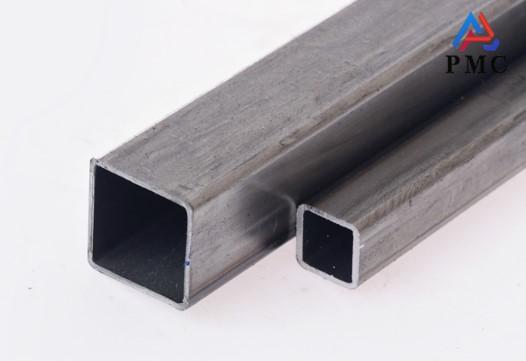
Square Tube Thickness
Square tubes, a common pipe material, play an important role in numerous fields, including construction, machinery manufacturing, and the automotive industry. Square tube thickness, generally measured in millimeters, refers to the actual thickness of the tube wall. Just like seamless tube, where wall thickness directly affects strength and durability, square tube thickness is more than just a number; it is a key indicator of a tube's performance and applicable scenarios.
Square tube thickness specifications
1. Classification by thickness range
Thin-walled square tubes typically range in thickness from 0.8 to 3 mm and are often cold-rolled to achieve high precision. Suitable for decorative and lightweight supports (such as billboard frames and furniture frames), they offer advantages such as light weight, low cost, and ease of cutting and welding.
Medium-walled square tubes: 4-10mm thick, produced through hot-rolled or cold-drawn processes, offer balanced strength and toughness. Widely used in general industrial equipment (such as machinery housings and workshop guardrails) and building secondary structures (such as purlins and support beams).
Thick-walled square tubes: ≥12mm thick, mostly hot-rolled, offering strong pressure and impact resistance. Suitable for heavy-duty structures such as bridge load-bearing components, large equipment bases, and high-pressure pipeline frames.
2. Common standard specifications
Small: 1.0mm, 1.2mm, 1.5mm, 2.0mm, 2.5mm, 3.0mm
Medium: 4.0mm, 5.0mm, 6.0mm, 8.0mm, 10mm
Large: 12mm, 14mm, 16mm, 20mm, 25mm (larger thicknesses available on request)
3. Special scenario specifications
Stainless steel square tubes: Due to corrosion resistance requirements, thicknesses of 1.5-8mm are common. For example, food-grade equipment often uses 2-5mm.
Aluminum alloy square tubes: Emphasizing lightweight, thicknesses of 1.0-6mm are suitable for doors, windows, and aviation components.

Square tube load bearing
The load is the key factor in determining the thickness of the square tube, and the two are closely related. When the square tube needs to bear a large pressure or weight, such as in bridge construction, the square tube structure used to support the bridge deck must be thick-walled to prevent deformation, fracture, and other dangerous situations caused by heavy pressure.
Taking the common Q235 material square tube as an example, when the span is 5 meters and it needs to withstand a concentrated load of 5 tons, based on mechanical calculations and engineering experience, it may be necessary to select square tubes with a wall thickness of more than 5mm to ensure that it has sufficient strength and stability to ensure the safety of the bridge during long-term use. On the contrary, if the load is small, such as the square tube used for display racks, where only some lightweight items need to be placed, a square tube with a thickness of 1mm - 3mm can meet the requirements.
Standard and deviation of square tube thickness
The national standard has clear provisions on the allowable deviation of the thickness of the square tube, including positive and negative deviations:
Positive deviation: The actual thickness is greater than the standard value. It is normal if it does not exceed the upper limit. It generally does not affect the use. In some scenarios (such as auxiliary structures of ordinary buildings), it can enhance stability.
Negative deviation: The actual thickness is less than the standard value. Exceeding the upper limit may affect the use, such as the load-bearing capacity of the main structure of the building is reduced, causing safety hazards, and mechanical parts cannot withstand stress and cause damage.
Deviations vary depending on the material, specification, and standard. For example, the allowable deviation for the wall thickness of Q235 square tubes specified in GB/T3091-2015 is ±12.5%. Production must strictly control deviations, and procurement must be inspected according to standards to ensure quality.
How to choose the right thickness of square tube?
Choosing the right thickness of square tube requires a comprehensive consideration of many factors. First, it should be combined with the use environment. In a humid and corrosive environment, it is necessary to choose corrosion-resistant square tubes with appropriate thickness to ensure their service life and stable performance.
The load-bearing requirement is the core. The thickness should be determined based on the actual pressure and weight, through mechanical calculations and reference to engineering experience. For example, for brackets that carry heavy equipment, square tubes of sufficient thickness must be selected to prevent accidents.
Budget cost also needs to be considered. Balance thickness and cost while meeting requirements. When the budget is limited and the load-bearing requirements are not strict, a thinner one can be selected within a safe range, but safety cannot be sacrificed.
In addition, it is necessary to actively communicate with suppliers, refer to industry standards and professional materials, ensure that the selected thickness meets the requirements and specifications, and ensure the quality and safety of the project.
Read more: Rectangular Tube Sizes
- 【Prev】 : API 5L Carbon Steel Pipe
- 【Next】 : Seamless Pipe for Geological Use


